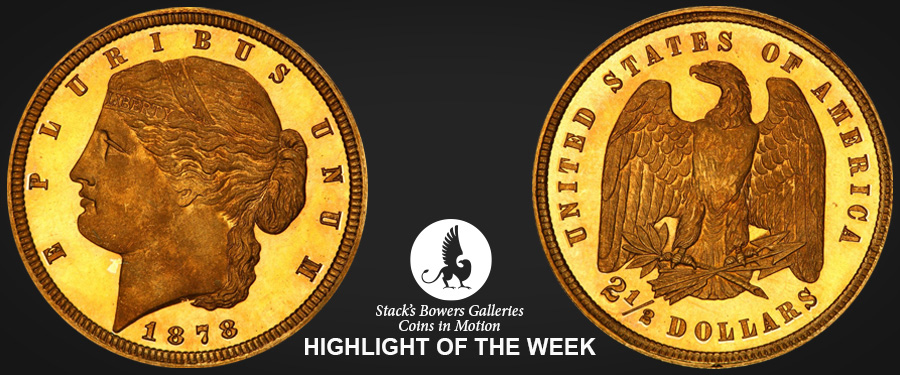
This quarter eagle pattern type is attributed to George T. Morgan, and it came about as a result of the ideas on anti-counterfeiting introduced by Dr. J.T. Barclay on the 1860 Judd-271 pattern half eagle. Barclay believed that the most dangerous and difficult to detect method of counterfeiting U.S. gold coins was to hollow out the inner gold core and replace the extracted metal with an equal amount of platinum (which was, at the time, less valuable than gold but weighed about the same). It was thought that coins struck on thinner planchets would be more difficult to hollow out, thus making this method of counterfeiting less attractive. The Mint abandoned the idea in 1860, after only a few experimental pieces were struck. The attempt in 1878 met with the same fate, likely because producing the thinner coins proved difficult, a situation similar to that experienced with the regular issue Type II gold dollars of 1854 to 1856.
This coin provides a great opportunity to add to your United States pattern collection. You can find lot 7240 on Stack’s Bowers Galleries website, www.stacksbowers.com, and you can view the Coins in Motion video below.





